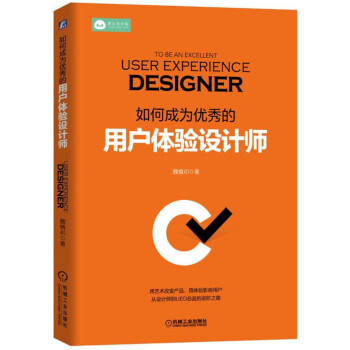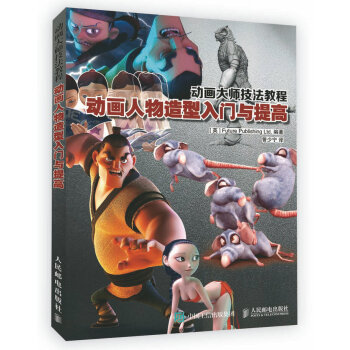![设计物联网产品(影印版) [Designing Connected Products]](https://pic.tinynews.org/12048305/58c7b4b8N5b7d0125.jpg)

具体描述
内容简介
联网的温度计、健身监测器和门锁,说明物联网能够并且将开启人们与周围世界互动的新途径。但是为消费者设计联网产品带来的挑战超出了常规的软件用户界面和交互设计。《设计物联网产品(影印版)》为有经验的UX(用户体验)设计者和技术专家提供了清晰可操作的路线图,循此可在这个全新的市场中实施消费者产品策略和设计。通过引入当前的设计实践和学术研究成果,《设计物联网产品》提出了关于采用跨设备交互、物联网技术复杂生态系统的合理建议,检验了一种用于控制器、应用程序和生态系统的理想SDN框架。
内页插图
目录
ForewordPreface
Chapter 1 What's Different About User Experience Design
for the Internet of Things?
How Is UX for IoT Different?
A Design Model for loT
Summary
Chapter 2 Things: The Technology of Connected Devices
Types of Connected Device
Multipurpose Computers
Bridging Physical and Digital:
Sensors and Actuators
The Challenge of Powering Devices
Conserving Battery Life
Summary
Chapter 3Networks: The Technology of Connectivity
Why Is Networking Relevant to IoT UX?
Networking Issues That Cause UX Challenges for loT
The Architecture of the Internet of Things
Types of Network
Network Communication Patterns
Internet Service
Summary
Case Study 1 Proteus Digital Health: The Connected Pill
Chapter 4 Product]Service Definition and Strategy
Making Good Products
From Innovation to Mass Market
Tools Versus Products
What Makes a Good Product?
Services in loT
Business Models
Summary
Chapter 5 Understanding People and Context
The Role of Research in
Connected Product Design . ,
Initial Questions and Concepts
Techniques: from Asking to Watching to Making
Summary
Chapter 6Translating Research into Product Definitions
Generating the Elevator Pitch
Why Does Your Product Matter?
What Is Your Product?
What Does the Product Do?
Recurring Questions for Product Strategy
Summary
Case Study 2Little Kelham: Connected Home
……
Chapter 7Embedded Device Design
Chapter 8Interface and lnteraction Design
Case Study3 Ford SYNC 3: Connected Car
Chapter 9 Cross-Device Interactions and lnterusability
Chapter 10 Interoperability
Case Study 4 LOOP: Connected Pelvic Floor Exeraser
Chapter 11Responsible loT Design
Chapter 12 Supporting Key Interactions
Case Study 5 BRCK: Rugged Portable WiFi Hotspot
Chapter13 Designing with Data
Chapter14Iterative Design: Prototyping and Learning
Chapter15 Designing Complex, Interconnected Products and Services
Appendix A Comparues, Products, and Links
Index
前言/序言
Since the dot-com crash of the early 21st century, the Internet has grown up. No longer a just a collection ofvirtual storefronts, it now faalitates a wide range of human expression and interaction. It catalyzes changes in our culture. It supports intimate contact, and it fuels revolution. Through it, we've realized a shift in our relationships, from a centralized model where a few central players control how we communicate to a decentralized one in which the size ofyour organization matters less than the relevance ofyour message. The decentralization of media and communication is the most important change brought about by the Internet. Thus far, we've effected that change only through glass rectangles, but not for long. The Internet now connects your car, your car keys, your door lock, your lights, and your exerase regimen. Your informational body can now have a more direct effect on your physical body, and vice versa. We're only just beginning to understand the implications of this, and to develop the tools to design for it.Like the authors, I'm not a fan of the term "Internet of Things." It overlooks this major change that the Internet has brought about in how we communicate, and instead, presents an ideal world in which the automation and centralization of data collection comes first, and the interaction of people and communities comes a distant second, i fat all. This change is not about the things, but about the physical interaction those things enable.
We remember (and use) great products because of the experiences they help us to realize. Our interaction with a product-and with each other through it-is what makes it memorable. Really great connected products will be memorable for the same reason. We won't remember them because of the data collected, but because of how they will enhance our lives and our connections to each other. Designing connected products is not just an engineering problem. This job takes creative input from many different disciplines: engineering, industrial design, anthropology, and user experience design, to name a few. In this book, Claire Rowland and her colleagues outline a thorough framework for practicing the design of connected products and services. They provide the overview of the technical and scape that you'd expect from such a book, and best practices for designing connected products, including user research, business model formation, and prototyping methods, of course. But they also tackle issues that aren't often covered: two chapters on understanding your fellow team members, for example. By juxtaposing the assumptions of each discipline, from industrial design to UX design to anthropology to product engineering, they provide insight on why something that seems nonsensical to an engineer might be important to a designer, and how the con cerns ofall team members are necessary to do a thorough job.
Looking beyond the everyday production tasks, they introduce two critical concepts that anyone working in this area needs to understand: interoperability and interusability. Without interoperability, we are doomed to a future of incompatible devices and standards from com peting brands. Without interusability, we are doomed to a future of relearning core user experience concepts like connect, play, stop, and restart over and over again with each new interface.
A world in which connected devices are ubiquitous is one in which privacy, control, and transparency are radically changed. As designers of these systems, we need to take responsibility for our role in this shift. The authors acknowledge this, and provide an overview of the ethical considerations of designing connected products. This is one of the most valuable parts of the book, as it helps designers to think not just about the product or the business model, but the impact of their work on customers' safety, privacy, and well-being. Gathering all the data in the world is pointless if we sacrifice quality of life for it. I've been building network-connected physical interfaces, and teaching students how to do it, since 2001, and this is the first book I've encountered that gives designers a detailed and practical approach to do this.
用户评价
最近我一直在思考,如何将我的一些个人创意转化为实际的产品。我有一些关于提高生活效率的小想法,觉得如果能通过智能设备实现,一定会非常有意义。然而,我常常在思考的初期就遇到了瓶颈:我清楚自己想要什么,但不知道如何将这个概念落地,如何转化为一个可以被制造出来的、并且能够被他人接受和使用的产品。我特别希望能从这本书中获得一些指导,不仅仅是关于技术层面,更是关于整个产品从概念到实现的流程。我希望它能够引导我思考,一个成功的物联网产品,需要具备哪些关键要素?从最初的用户需求分析,到后期的原型设计、用户测试,再到最终的生产和市场推广,整个链条是怎样的?我期待这本书能够提供一套相对完整的设计方法论,让我能够更系统地思考我的创意,避免走弯路。
评分作为一名正在学习产品设计专业的学生,我一直对“连接”这个概念在产品设计中的作用充满好奇。我们现在接触到的很多产品,已经不再是孤立存在的,而是通过网络连接,形成一个更大的生态系统。而物联网产品,更是将这种连接推向了极致。我希望这本书能够帮助我理解,这种“连接”到底为产品设计带来了哪些新的可能性和挑战?它不仅仅是简单地将设备联网,更重要的是如何通过这种连接,创造出全新的用户价值和商业模式。我期待书中能够深入探讨,在设计一个互联产品时,需要考虑哪些超越传统产品设计的因素,比如数据安全、隐私保护、以及如何处理设备间的协作和交互。我希望能够从中学习到如何将“连接”的思维融入到我的设计理念中,为我未来的职业发展打下坚实的基础。
评分这本书我刚拿到手,就被封面那简洁又富有科技感的插画深深吸引了。我是一个对智能家居和可穿戴设备一直抱有浓厚兴趣的人,总觉得它们代表着未来的趋势,能够极大地改善我们的生活方式。然而,每次看到市面上琳琅满目的产品,我总会好奇:这些看似简单的设备背后,究竟是如何实现如此精妙的互联互通的?它们是如何感知我们的需求,又是如何将信息传递到云端,再反过来影响我们的实际体验的?这本书给我的第一印象就是,它似乎能够为我揭开这层神秘的面纱。我迫不及待地想要深入了解,那些隐藏在屏幕背后的逻辑和技术,是如何被巧妙地设计出来,最终呈现在我们触手可及的物联网产品中的。我期待这本书能够用通俗易懂的方式,讲解那些复杂的概念,让我这个非专业人士也能窥探到物联网产品设计的全貌,甚至能够启发我思考,未来我自己的生活还能在哪些方面被这些智能设备进一步提升。
评分自从上个月我开始尝试自己搭建一些简单的智能家居场景,我就深深体会到了产品设计的重要性。之前总是觉得,只要把各种传感器和控制器连起来,再写点代码就行了,但实际操作起来才发现,用户体验的好坏,往往就取决于那些细节的设计。比如,一个智能插座的指示灯是否足够醒目,让你能快速判断它是否连接成功;一个智能灯的 App 操作逻辑是否直观,让你不必花费大量时间去摸索;甚至包括一个设备在第一次配网时的提示信息,是否清晰明了。这本书的标题让我觉得它可能正是我需要的“救星”。我希望它能够从用户的视角出发,深入剖析那些优秀物联网产品在细节之处是如何打动人心的。我特别想知道,那些在设计过程中,是如何平衡技术可行性和用户易用性的?是如何通过细致的入微的考虑,让冰冷的科技产品瞬间变得有温度,能够真正融入我们的日常生活,而不是成为一种负担。
评分我一直对那些能够“听懂”我意图,并且能够主动提供帮助的智能设备非常着迷。我总觉得,未来的科技不应该是我们去适应它,而是它能够更好地理解和适应我们。这本书的封面就散发出一种“智慧”的感觉,让我觉得它可能就是关于如何创造这种“智慧”的。我希望这本书能够带我进入物联网产品设计的“幕后”,了解那些让设备变得“聪明”的奥秘。我期待能够了解到,设计师是如何通过对用户行为模式的深刻洞察,来预测用户需求,并将其转化为产品功能。同时,我也好奇,在设计一个智能设备时,是如何平衡“主动性”和“用户控制权”的?既要让设备足够智能,又能让用户始终拥有掌控感,这其中的度该如何把握,是我一直想弄明白的问题。
相关图书
本站所有内容均为互联网搜索引擎提供的公开搜索信息,本站不存储任何数据与内容,任何内容与数据均与本站无关,如有需要请联系相关搜索引擎包括但不限于百度,google,bing,sogou 等
© 2026 book.tinynews.org All Rights Reserved. 静思书屋 版权所有









![图像处理和分析的图模型:理论与应用 [Image processing and analysis with graphs: theory and practice] pdf epub mobi 电子书 下载](https://pic.tinynews.org/12169515/59bba70eN8bf1a2b9.jpg)




![Word/Excel/PPT 2016办公应用从入门到精通 [赠送4.3G超值云盘资料压缩包,含16小时本书语音教学视频+办公技巧视频] pdf epub mobi 电子书 下载](https://pic.tinynews.org/12226942/597845a8N8693b095.jpg)





